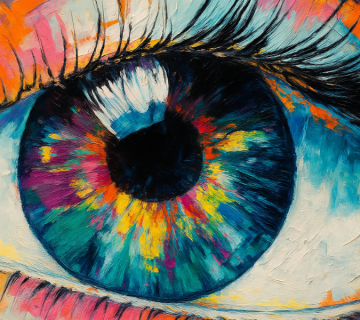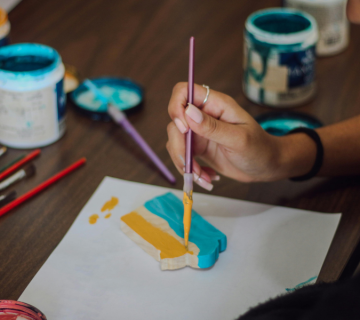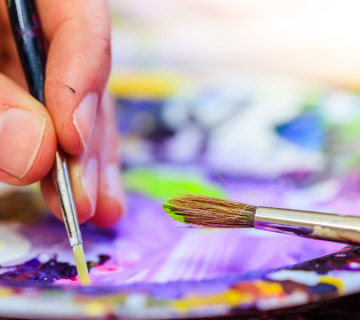How to Iron a Paint by Numbers Canvas: A Step-by-Step Guide
If you’ve recently completed a beautiful Paint by Numbers project, you might notice some wrinkles or creases on your canvas. Whether your canvas arrived folded or has developed folds during painting, ironing it can help restore its smooth appearance, ensuring your artwork is ready for display. Here’s a detailed guide on how to iron your Paint by Numbers canvas safely and effectively.
Why Iron a Paint by Numbers Canvas?
Irons are commonly used to remove creases and wrinkles from fabric, and the same applies to your canvas. After spending hours painting, it’s natural to want your artwork to look flawless. Ironing will:
- Smooth Out Creases: If your canvas has folds from shipping or storage, ironing will help flatten it.
- Enhance the Appearance: A wrinkle-free canvas looks more polished, which is essential if you plan on framing or hanging it.
- Prevent Damage: Using the correct technique ensures the paint remains undisturbed while smoothing the canvas.
What You’ll Need:
- Paint by Numbers Canvas: The star of the show! Ensure your painting is completely dry before starting the ironing process.
- Ironing Board or Flat Surface: A smooth, flat surface like an ironing board is ideal.
- Clean White Cotton Cloth or Tea Towel: This acts as a barrier between the canvas and the hot iron, preventing direct contact and possible damage.
- Iron: Preferably with adjustable heat settings.
- Water Spray Bottle (Optional): This will help if the wrinkles are stubborn.
Step-by-Step Guide to Ironing a Paint by Numbers Canvas
Step 1: Ensure the Canvas is Fully Dry
Before ironing, make sure your Paint by Numbers canvas is completely dry. Wet or damp paint will smudge easily under the heat. Allow your painting to dry for at least 24-48 hours, depending on the paint you used.
Step 2: Set Up Your Ironing Area
Place your ironing board on a flat surface, or if you don’t have an ironing board, a clean and smooth table will work just as well. Lay your canvas flat on the board with the painted side facing up.
Step 3: Place a Cloth Over the Canvas
Lay a clean white cotton cloth or a tea towel over the painted side of the canvas. This layer will prevent direct contact between the hot iron and the paint, which could potentially ruin your artwork. The cloth will also help distribute heat evenly.
Step 4: Adjust Your Iron Settings
Set your iron to a low or medium heat setting, depending on the material of the canvas. A high heat setting can damage the canvas and may cause the paint to melt or distort. Ensure the steam function is turned off, as moisture can affect the paint.
Step 5: Ironing the Canvas
Gently press the iron onto the cloth, moving it in slow, smooth motions. Do not leave the iron in one spot for too long to avoid overheating. If you’re dealing with stubborn wrinkles, you can lightly mist the cloth with water using a spray bottle to help relax the fabric. Be cautious not to get the canvas too wet, as excess moisture could damage your paint.
Step 6: Check for Wrinkles
After a few strokes, lift the cloth to check if the wrinkles have been removed. Continue ironing in small sections until the entire canvas is smooth.
Step 7: Allow the Canvas to Cool
Once you’ve finished ironing, let the canvas cool down for a few minutes. This will help set the smoothness and ensure the canvas stays flat.
Tips for a Successful Ironing Session:
- Don’t Overheat: Always start with a lower temperature and increase it only if necessary. High heat can damage both the canvas and the paint.
- Test on a Small Area: Before ironing the entire canvas, test the technique on a small, inconspicuous area to make sure the heat doesn’t cause any adverse effects.
- Avoid Using Steam: Steam can dampen the paint, so it’s best to keep your iron on a dry setting.
- Use a Pressing Cloth: Using a white cotton cloth as a barrier is essential. It not only protects your artwork but also ensures even heat distribution.
- Work in Sections: Iron in sections to ensure you don’t miss any wrinkles or folds.
What to Do If You Don’t Have an Iron
If you don’t have an iron, you can try these alternatives:
- Rolling the Canvas: Roll the canvas up tightly (with the painted side facing outward) and leave it like this for a day or two. The natural pressure from rolling can help remove minor wrinkles.
- Pressing with Books: Lay the canvas flat on a clean surface and place heavy books on top to help flatten the wrinkles. Leave it for a couple of days.
- Steaming: Hang the canvas in a bathroom while taking a hot shower. The steam can help loosen the wrinkles, but this method requires caution to avoid getting the paint wet.
Ironing your Paint by Numbers canvas is an easy way to give your artwork a polished, smooth finish, ready for framing or hanging. With the right tools and techniques, you can eliminate wrinkles without damaging your painting, ensuring your hard work is beautifully displayed. Follow this guide, and your canvas will look perfect every time!
By ironing with care and precision, you can protect the integrity of your work while giving it a crisp, professional look.








No comment